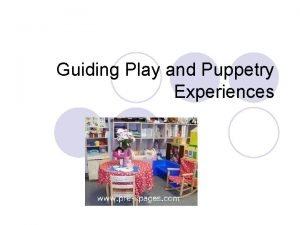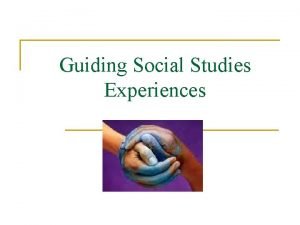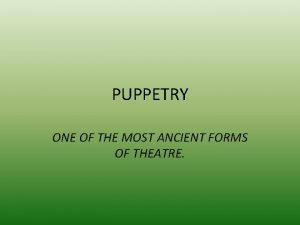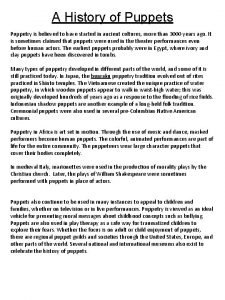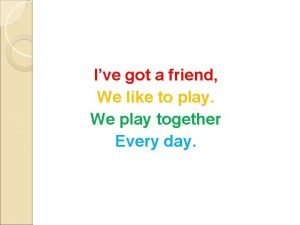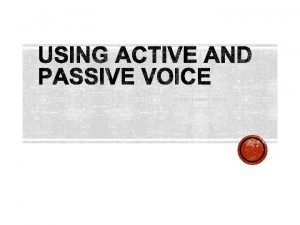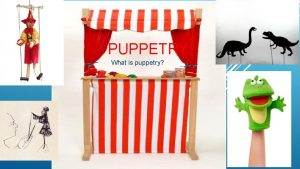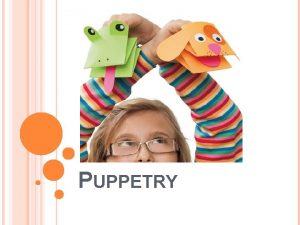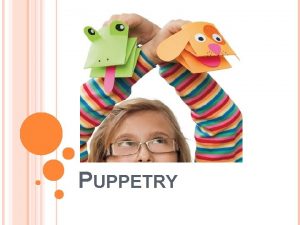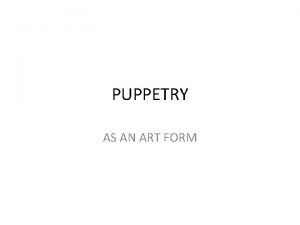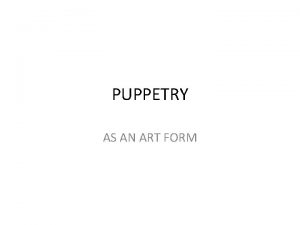Guiding Play Puppetry Experiences Chapter 21 Types of









- Slides: 9

Guiding Play & Puppetry Experiences Chapter 21

Types of Play Dramatic Play: When one child imitates another person or acts out a situation Socio-Dramatic Play: When several children imitate others or act out situations together The most complex type of play Seldom observed before the age of three

Stages of Play Solitary Play: Independent play by one child Parallel Play: Play beside, but not with, another child Seldom observed before age two Cooperative Play: Play between two or more children Involves sharing Builds social skills

Stages of Material Use in Play Manipulative Stage: Handles and discovers toys Uses senses to explore toys Functional Stage: Uses toys as they are intended Ex. Plays house with a doll house, uses a car on a track, pounds with a hammer, etc.

Stages of Material Use in Play Imaginative Stage: Does not need real toys to play The child thinks of and uses substitutes Ex. Makes a large box into a space ship, uses a swing set as a dog house, etc. Not all children reach this stage – they don’t choose to play this way

Puppetry Involves the use of puppets in play Hand puppets Mascot puppets Me puppets Personification Giving human traits to animals or nonliving objects Conflict = Two or more forces that oppose each other Ex. Good vs. evil, right choice vs. wrong choice Adds interest or excitement to a puppet show

Writing a Puppet Story 1 -Choose a theme that teaches the preschool children a valuable life lesson or skill Ex. Don’t talk to strangers, honesty, eating healthy foods, etc. 2 -Choose and assign the characters 3 -Outline the script Set the tone by introducing the characters and story line Present a conflict for interest and excitement Provide a happy ending with a resolution to the conflict

Creating Puppets Create at least four characters with speaking parts Puppets may represent humans or you may use Personification and have animals or objects speak and act like humans Choose a consistent style Ex. Paper bag, stick with foam paper, sock, fabric or felt Use a variety of materials Ex. Popsicle sticks, googly eyes, pipe cleaners, paint, shredded paper, yarn, foil, pasta, beads, silk flowers, buttons, sequins, TP rolls, Styrofoam balls, etc.

Another Use for Puppets Projection: During therapy, a child places feelings and emotions onto a puppet Use puppets to externalize an internal problem Ex. Child speaks through the puppet to share a traumatic or difficult experience, points to body parts on a puppet instead of their own body, etc.
